Editor’s Note: Historically there has been a rare breed of deejay—those who were drifters and adventurers. Perhaps in the Top-40 era, this nomadic lifestyle was a necessary means of survival. Michael Boss (aka Mike Paul) confesses that he fills the bill. Early on in his career, he was “morning man” at KOQT Bellingham, Washington. “I was always pushing the envelope,” he told QZVX. His road from the Pacific Northwest to XETRA, the Mexican border blaster, had many detours and he was responsible for some wildly experimental radio along the way. Over the years, Michael’s name has become inextricably linked with Southern California’s Mighty 690 (CLICK HERE to read Part 1 of Michael’s “Mighty 690″story). The public’s perception of his close ties to the border blaster may be due to Michael’s distinctive voice and presentation, and another part the result of his “Boss” name. The fact he spent more years “on-air,” broadcasting from Mexico, than any of the other XETRA jocks is undoubtedly part of his appeal as well. In Part 2, we look at the question: how did he get from here to there? That leads to Michael taking us on his personal journey from Bellingham to Baja. Audio clips include curiosities and “blips” from stations where he worked in the ’70s as well as more audio from the Mighty 690.
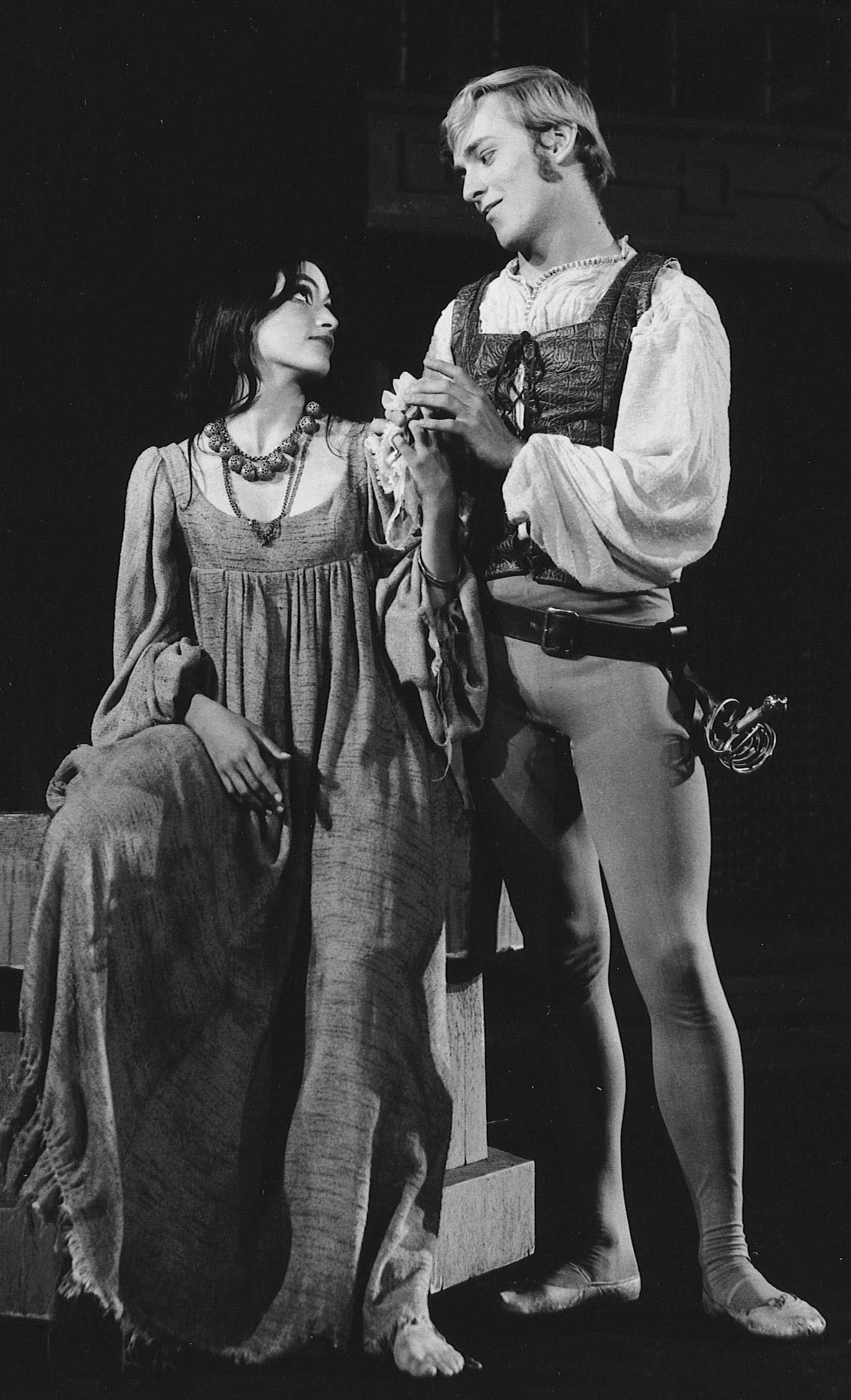
Michael Paul Boss was born in 1949 in Denver, Colorado. He spent his formative years in Southern Utah. He was the preacher’s son, the non-Mormon on the block and (in high school) a garage band drummer. He has a background in theater, broadcasting and secure communications as well as publishing, promotions and public relations.
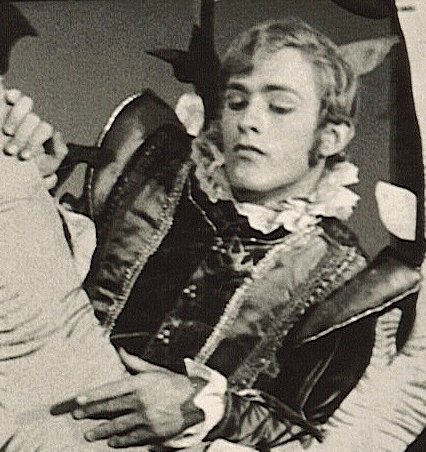
Michael trained as an actor in high school and received numerous accolades for his work. He then majored in drama at Southern Utah State College, where he was “most promising actor” of 1968: for Sir Dinadan (Camelot) and Walter Mitty (Thurber Carnival). He won “best actor” in 1969 and was awarded a full-tuition scholarship for his portrayal of Pizarro (Royal Hunt of the Sun). His drama master was the late Fred Cruikshank Adams, Tony and Emmy award winner and founding director of the Utah Shakespeare Festival. He joined the repertory company in 1966 (at age 17) and performed five seasons: 1966-68-69-71-74.
Lyceum circuit roles included Romeo (Romeo and Juliet) and Petruchio (Taming of the Shrew). He played Lord Longaville (Love’s Labour Lost) and Cassio (Othello) in regular season. His list of directors includes: Charles Metten, formerly with the Blackfriar’s Guild, New York; Michael Finlayson, Royal Shakespeare Company and Sabin Epstein, assistant to Carlo Mazzone-Clementi, one of the leaders of modern European theater who toured alongside Marcel Marceau. Among the notable actors he worked with was Paul Michael Glaser, subsequently, of Starsky and Hutch television fame.
The Road From Bellingham to Baja – In His Own Words
My love affair with radio began in 1955. It was my first summer with grandparents in Denver and I remember afternoons filled with the music of Harry James on KOA. The Mile-High City cast its spell and sundowns were golden. After dinner I would place the Zenith radio on Grandma’s parlor rug, with the cord stretched as far as it would go from the wall socket. I would lie in the dark—hypnotized by the warm glow of the frequency tuner while listening to Johnny Dollar, private eye, on cosmic KLZ. And then the Sixties arrived (my teen years). At night I listened to Top 40 from KOMA, Oklahoma City or the “Wolfman” on XERF. How could I know that I would meet the man many years later?
The “career” began, inauspiciously, as a high school reporter for KSL, Salt Lake City (1966-67). My first commercial “gig” came in 1968. KSUB, Cedar City, Utah (your tri-state address for CBS) dated back to 1937. It had an orginal Collins board in the production room, ribbon mics and slip-start turntables with two tone-arms (one tracked from the inside out). There was a Rek-O-Kut transcription machine and even Audiodisc recording blanks. The place was a museum piece! At the time, KSUB had 25,000 LPs in its library. Imagine, I’m a 19 year-old kid embarking on a musical adventure—from nine-to-midnight. In my time slot there were probably 5,000 LPs, all disc jockey’s choice! You could play anything except the tracks the program director had marked “no.” Music selections were color-coded and the only thing you followed, more or less, was a tempo clock. I played Dave Brubeck, the sensuous jazz of Les and Larry Elgart and the exotica of Martin Denny, all the stuff we now call “bachelor pad” music. I get nostalgic just thinking about it. Later, I would become the KSUB news anchor for the fifteen-minute news-at-noon, which featured five minutes of national news (with CBS actualities), five minutes state and five, local. I would work at KSUB on three separate occasions between 1968 and 1979.
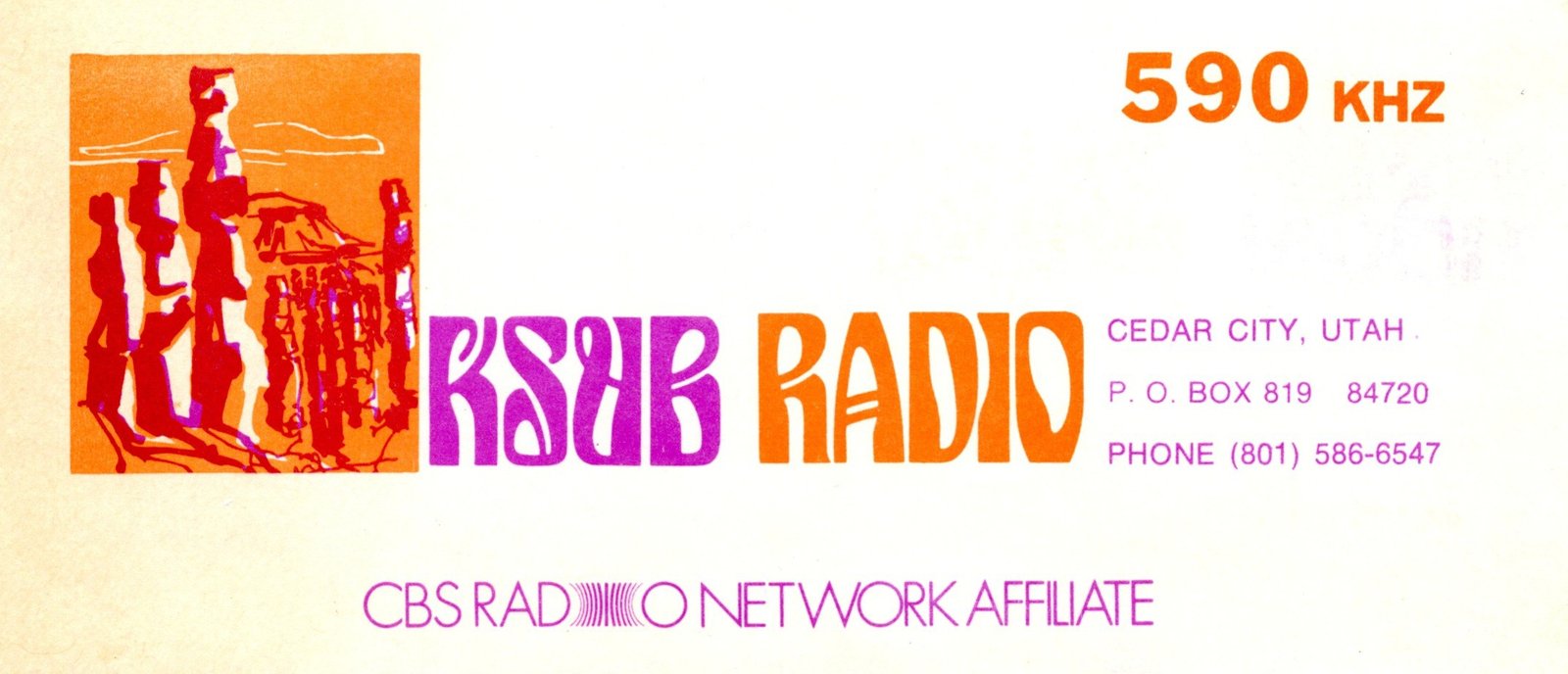
Seattle Days
When I landed in Seattle I already had a year of commercial radio under my belt. But I was not yet 21 years old and figured, the only way for a complete unknown to get a job in the market was to meet someone with connections. This was my motivation for enrolling at the Stu Martin School of Broadcasting (December ’69). Stu was a well-known TV personality in Seattle, formerly a movie host at KTVW channel 13 and he was “terrorizing the airwaves”—as he described it—from KMO, Tacoma. I remember a journalistic assignment that Stu gave us. We were to report on the first 747 to take off from Boeing Field. So I went out to see the big bird fly. As part of further training, I moderated a discussion between Victor Stredicke (Seattle Times) and radio personalities Mason & Dixon of Seattle’s Mason & Dixon Line. Looking back, I’m not sure how that went down, or even what the topic was. The best part about the school? I was tutored in commercial copywriting by J.P. Heatherly, one of the highest paid ad men on Madison Avenue in the ’50s and ’60s. The man was brilliant and worth the tuition alone. He had been a roommate of NBC’s Chet Huntley in the early years.
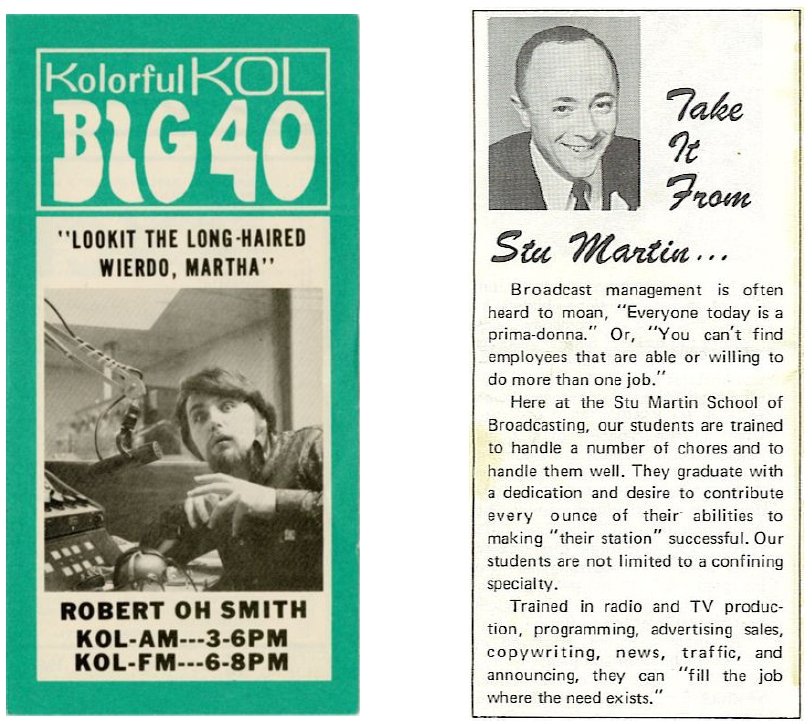
The Seattle radio stations on my list were KJR, KING and KOL, but primarily KOL where Robert Oh Smith was something of an inspiration to me. I loved the way “Kolorful” KOL was production intensive and “orchestrated” their commercials. Robert Oh had a Father Manischewitz character that sounded like Alfred Hitchcock. Coming out of an Olympia Beer commercial the Father could be heard saying, “bless you my son…would you like another beer…uhh!…don’t drop it! (crash!) Next thing you knew you were listening to an ad for chinaware. Yes, even the commercials were fun. Seattle radio was very entertaining in those days.
I didn’t have the girl but I had the “pad” in West Seattle (4008 S.W. Walker). From my veranda there was a fabulous view of Elliott Bay, the Seattle skyline and Mount Ranier. The route to the Stu Martin School of Broadcasting took me across the southern tip of Harbor Island (with the old KOL radio tower in full view). The “school building” was on Western Avenue near the waterfront, at the bottom of Denny Way. It was located in a two story warehouse and the wall facing Western had a psychedelic color scheme (Stu’s idea, no doubt). At ground level, tractor-trailer rigs were coming and going with loads of household appliances. The school, itself, was upstairs and very spacious. About once a week these guys in fine, Italian suits would drop by for a visit—like they owned the place. They were connected, somehow, to the warehouse operation below. But I wondered, did they have an “interest” in Stu’s radio school? One was in his mid forties, I’d say. The other was maybe 10 years his junior. The younger of the two took a liking to me. He was sort of a Dutch uncle in reverse and I had just turned 21. We would go bar-hopping in the roughest joints in Seattle and I noticed everyone called him “Sir”…even the bad Leroy Browns.
1550 KOQT – Bellingham, Washington
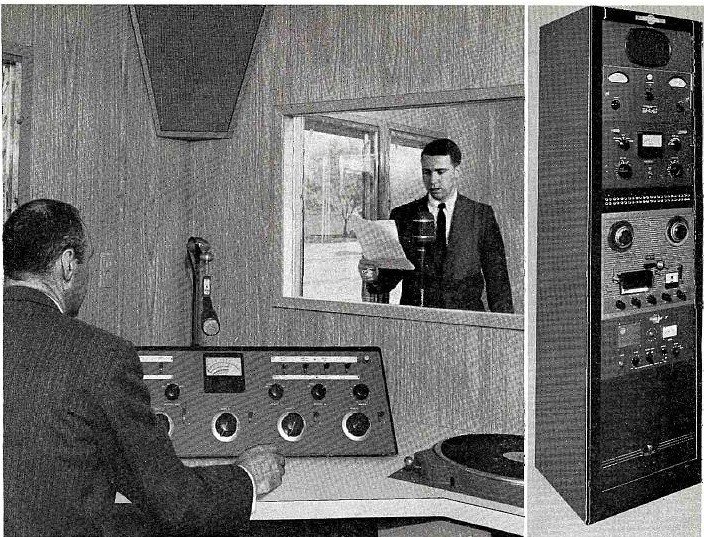
It was March, 1970 when Stu Martin arranged the job for me at KOQT. Your editor, Steven L. Smith, reminded me that the KOQT air studio and transmitter were located in a classic Collins broadcast trailer! He shared the above picture with me. Our control board was in the corner, just like the one shown here. The music was IGM’s “Hit Sound” format—the million sellers of adult pop and soft rock and the voice was that of Seattle’s Norm Gregory, a KJR jock at the time (CLICK HERE to read more). My alias was “Mike Paul,” an air name I never used before or since. When Steven first contacted me via email he wrote, “Michael….you were getting so poorly paid you slept in Cornwall Park and you were ‘Mike Paul.’ And Les Cole was PD, Steve Phillips engineer, Bob Waters…owner and Chet Matthison…so called GM. Am I getting any of this right?” Amazed that Steven had the goods on me, I replied, “my pay was $500 a month. On the first night out of Seattle I slept in the back seat of my ’66 Dodge GT at Cornwall Park. I had to ask Bob Waters for an advance so I could rent some digs.” How did he know? Steven quipped back, “Our paths crossed once or twice.” Had I forgotten? We had both worked at KOQT during the same time frame. I was 21, Steven was 18 and it was his first job in radio—my second. Disney was right, it’s a small world after all.
One morning I did an on-air “bit” that made our newsman Les Cole laugh. The seasoned professional who had been a fixture at stations like KTNT, KMO and KOMO said to me, “kid, you’ve got potential.” It was then I started thinking, “Maybe I have a future in this biz after all.” By the way, a couple years later I sent airchecks to KVGM (Bellingham) and KOL (Seattle) and received very polite rejection letters in return. You know the kind: “Your aircheck is very impressive but we regret to inform you…”
During the day, there was a particularly beautiful barmaid at the Blue Dolphin. At night there was a club called the Iron Bull. And then I would sign-on KOQT at 6 a.m. On my day off there was a bus ride to Vancouver, B.C. Life in Bellingham was good! But after five months I went down…
The Golden Coast
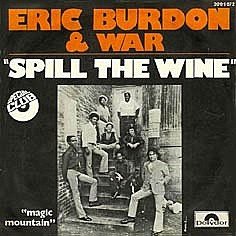
Eric Burdon and War had a hit with “Spill The Wine” and I was bewitched by the music and headed south. Little did I know I was on the road to an interview with Eric that would come to pass a decade and a half later. I stopped in Ashland, Oregon and then San Francisco—spending time with theater people I had worked with before. I still had acting in my blood and would eventually do two more seasons of Shakespeare.
 August, 1970 – You could hear me “in the afternoon” at the new 10,000-watt KBRE-AM in Cedar City, Utah (an ABC affiliate at 940 kHz). There were few programming guidelines and music was deejay’s choice. Along with Tom Jones, Cat Stevens and Joni Mitchell cuts, I would feature Leo Kottke, Dan Hicks and His Hot Licks or instrumental soul from Chitown. KBRE was a commercial station but the programming was free-form MOR, eclectic and fun. Here is a KBRE-Boss Radio “conspiracy” from June, 1971. Although there are detectable shades of Firesign Theater in this bit of silliness, it was most definitely inspired by Robert Oh Smith at KOL, Seattle. It is the only “Captain America” episode of mine that is known to have survived. Like John Barrymore said, “That’s all there is, there isn’t any more.” The “Captain” was portrayed by actor Norm Robinson.
August, 1970 – You could hear me “in the afternoon” at the new 10,000-watt KBRE-AM in Cedar City, Utah (an ABC affiliate at 940 kHz). There were few programming guidelines and music was deejay’s choice. Along with Tom Jones, Cat Stevens and Joni Mitchell cuts, I would feature Leo Kottke, Dan Hicks and His Hot Licks or instrumental soul from Chitown. KBRE was a commercial station but the programming was free-form MOR, eclectic and fun. Here is a KBRE-Boss Radio “conspiracy” from June, 1971. Although there are detectable shades of Firesign Theater in this bit of silliness, it was most definitely inspired by Robert Oh Smith at KOL, Seattle. It is the only “Captain America” episode of mine that is known to have survived. Like John Barrymore said, “That’s all there is, there isn’t any more.” The “Captain” was portrayed by actor Norm Robinson.
AUDIO CLIP – The Adventures of Captain America (Run time 2:54)
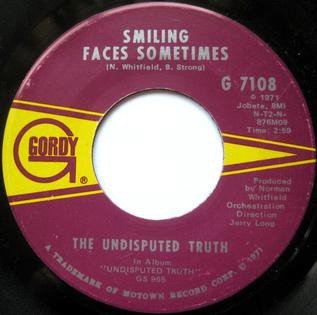 A few days after this episode aired, I went to Mexico with a member of the Black Panther Society. We were driving in the heat and dusk of the Tanque Verdes—land of shadows cast by giant hands of the saguaro—when an ominous sounding groove came on the radio (it was KRUX out of Phoenix). The lyrics kept replaying in my brain: “smiling faces sometimes/pretend to be your friend”…well, you know. The “panther” and I were eyeing each other like cats on a fence. And that’s the undisputed truth. We entered the city of Benito Juarez at midnight—Juarez, a freakish portal to hell and adventure! And it took me more than a week to get back to Utah. I adopted a country and western persona at the new KBRE studios and aired the classic stuff: Loretta Lynn, Charlie Pride and the Man in Black. About that time I applied for a job at KIMN (Denver). The response was as usual: “Your aircheck is very impressive, however…” I moved to Denver (in ’72) and drove cab, determined to waste my talent on the mean streets at night. Harry Chapin would have been proud.
A few days after this episode aired, I went to Mexico with a member of the Black Panther Society. We were driving in the heat and dusk of the Tanque Verdes—land of shadows cast by giant hands of the saguaro—when an ominous sounding groove came on the radio (it was KRUX out of Phoenix). The lyrics kept replaying in my brain: “smiling faces sometimes/pretend to be your friend”…well, you know. The “panther” and I were eyeing each other like cats on a fence. And that’s the undisputed truth. We entered the city of Benito Juarez at midnight—Juarez, a freakish portal to hell and adventure! And it took me more than a week to get back to Utah. I adopted a country and western persona at the new KBRE studios and aired the classic stuff: Loretta Lynn, Charlie Pride and the Man in Black. About that time I applied for a job at KIMN (Denver). The response was as usual: “Your aircheck is very impressive, however…” I moved to Denver (in ’72) and drove cab, determined to waste my talent on the mean streets at night. Harry Chapin would have been proud.
Programming Southern Utah’s First Album Rock Station
But there was a girl in Utah and so, like the prodigal, I returned. This time, I was at KSUB —my first radio home—when I got the offer to program the new KBRE-FM. In those days, everything about KBRE was new, new, new! It led to a bidding war between KBRE and KSUB and I was the “objective.” Finally, KBRE won out and I became program director of Southern Utah’s first AOR-FM. Fact is, I didn’t know what I was doing at first. I was flying blind in unknown territory, but I was confident that I could fake it. There were no published “classic rock” histories as yet. We were still living it. There was Billboard and their AOR list. And there were the record companies. That was about it. Sometimes I got freebies of the latest stuff. Sometimes I had to buy the vinyl. My playlist had the basics: Hendrix, Janis, Led Zeppelin, the Allmans and the Doors of course. But I was also playing Fleetwood Mac and Genesis before their mainstream success.
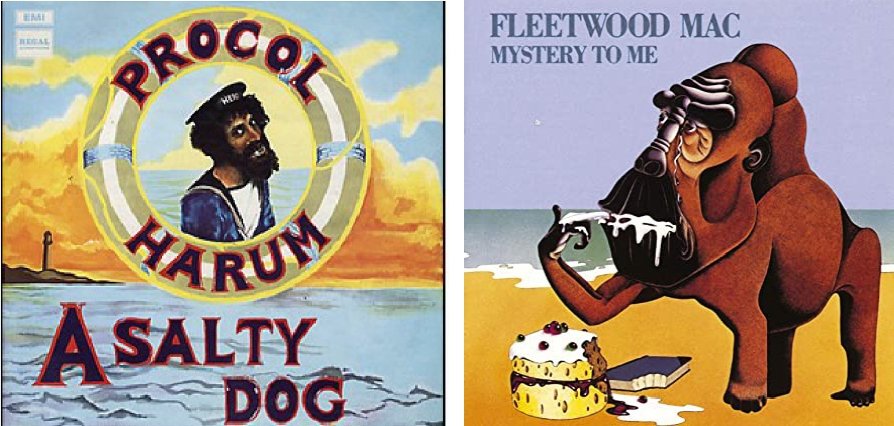
May 1975 – I had figured out what the girl was up to and was off to Denver again—back to high-flagging the meter on a cab and collecting enough material for a dozen novels. I was on the streets during the Smaldone-Falvo-Cicoletti turf wars and got all the scuttlebut at the cab company. We had drivers who were the Smaldone’s eyes and ears on the street. So everybody knew that Joseph Bonano had left New York and had a safe-house in Denver. That December (’76) I went home for Christmas. The Grapevine in Utah was also in good working order. Word was out that I was back and it was no more than a week before I got the phone call from John Miner, owner of KDXU in St. George.
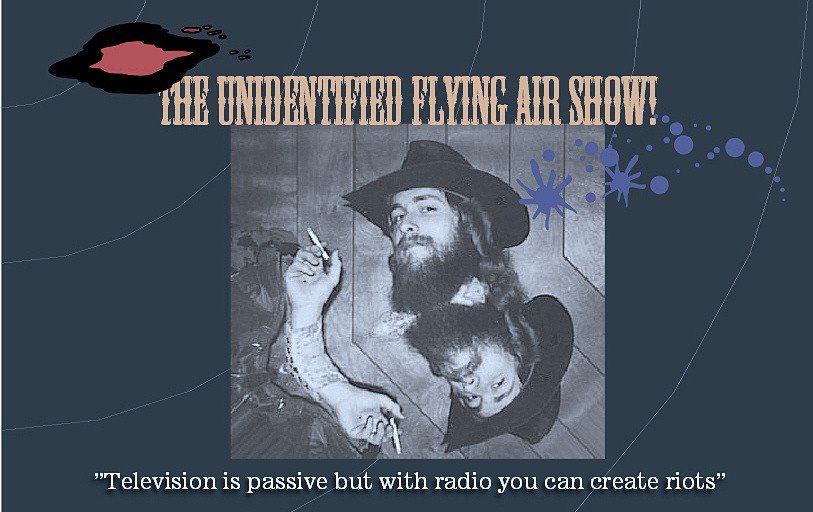
It was effective advertising and an instant legacy, because “the famous Dick’s Cafe” in St. George, Utah had been “famous” from the day it opened in the nineteen thirties. People joked that Dick Hammer “served only rustled beef!” There may have been a little truth in that as cattle rustling had long been a way of life out on the Arizona Strip. Yes, Dick’s Cafe was the place! The movie stars all ate there when they were filming on location. This was John Wayne’s hangout and his picture was on the wall in the main dining room. It became my hangout, too.
It was there (in January, ’77) that I caught the germ of an idea. I was at the lunch counter one afternoon and heard a couple of ranchers talking about gila monsters they’d seen out on the “Strip.” They joked about how they were in season. I was thinking how funny it would be if there really was such a thing as “Gila Season” and regulation size was six feet and all gilas had to measure up.
I had been hired to build a Top 40 audience for a nine-to-midnight show on 1450 KDXU, which was situated—conveniently—at the back of the cafe parking lot. I had been given total artistic control, including choice of content and music. Soon everyone would be talking about the “Bossman” and his “Unidentified Flying Air Show.” Success was literally overnight. The kids in town went wild and they were driving by the radio station —in droves—to get a look at the crazy, bearded disc jockey in the studio window. They weren’t sure: was I Billy Gibbons or Leon Russell? I had touched a nerve. Response was electric! That’s when I realized, television is passive but with radio you can create riots. I started to look at the “Unidentified” show as my personal radio experiment. And I am getting ahead of my story…
The Experiment
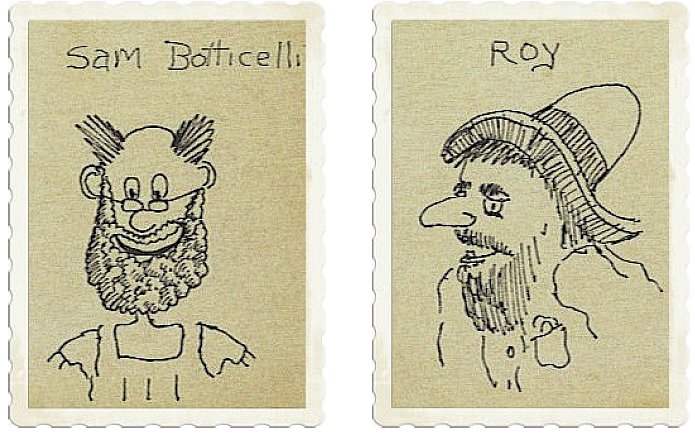
First, let’s introduce Sam Botticelli. Sam raised chickens and had the concession at the Dixie Roundup, an open-air pavilion—in plain talk, a pork and beans stand. His menus had genuine-imitation, plasticated gila-hide covers! Roy Skidmore sounded like a senile Gabby Hayes (voice by sportscaster Larry Jewell). He was Sam’s best buddy. They played call-shot checkers on Saturday nights.
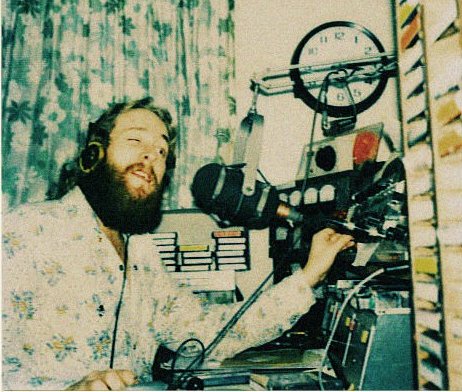
Coming out of ABC news at the top of the hour you heard Waldo Featherwright’s bi-plane overhead as the announcer says, “1450 KDXU, St. George, Utah…home of the world’s only crop-dusted music!” and Sam would sing-song, “It’s dusted, don’t git busted!” To set the mood after 11 p.m. the song that followed might be Gary Wright’s “Dreamweaver” or the more obscure “Insane Asylum” (a Willie Dixon tune) as performed by the Pacific Northwest’s Kathi McDonald.

I would name my creation “Top-40-Progressive.” At 9 pm you heard the Jacksons’ “ABC” or Paper Lace and “The Night Chicago Died.” By ten thirty I had already played The Commodores and “Brick House.” The eleven ‘o clock hour was more album oriented: Al Stewart, Nilsson, Maria Muldaur, Heart, the Doobies and Eagles (who could ever leave the Hotel California?) I wanted to feature localized humor and I remembered the conversations I heard at Dick’s Cafe—about gilas and rustlers. I discussed it with KDXU’s “X.V.” Kelly (who had a country and western show from 7-9 pm). We both agreed. It wouldn’t be prudent to encourage people to go out and steal somebody’s cows. Problem: If rustlers couldn’t rustle cattle what could rustlers rustle?
Those Crazy Characters on the UFO Show
There was an ornery cuss named Bad Tabasco (a word play on Wallace Beery’s Bad Bascomb & the hot sauce). He had a temper so hot that when he got mad he could melt ten years off the sun. But the baddest of the bad was Fred C. Dobbs (with a voice like Humphrey Bogart’s, curiously enough). And there was Hank Heavy and the Cockroach Kid—just plain rustlers. They rustled rocks and trees and sagebrush and desert landscape and moved it all around so you didn’t exactly know where you were from moment to moment. Tex Gritcherteeth would grit his teeth and say, “Looks like somebody moved that fence,” and Sam would respond, “Yep, looks like somebody moved that fence alright.” The landscape for this theater of the mind began just outside the St. George city limits.
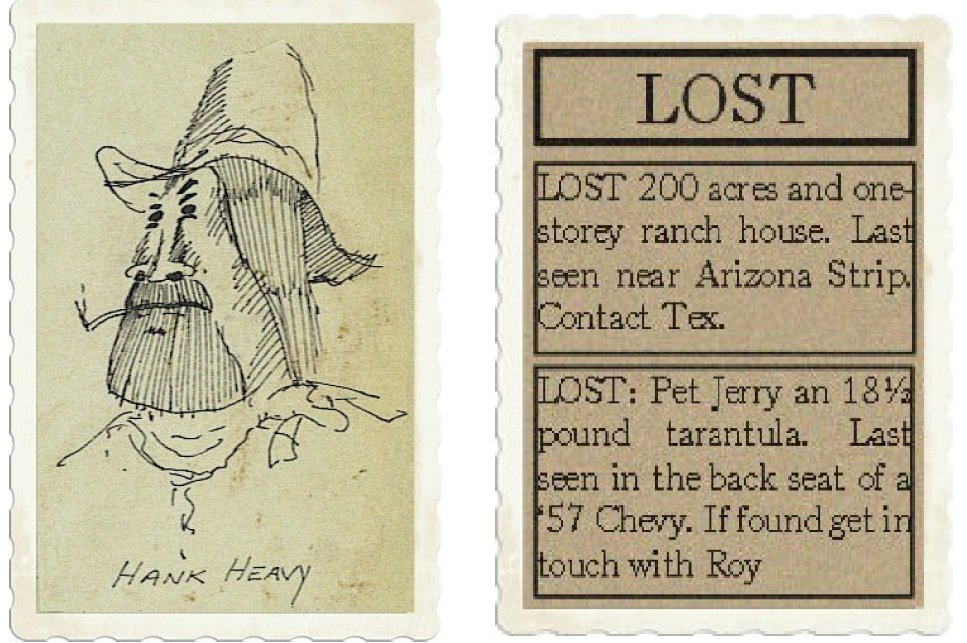
My alter ego—Sam–would tell you, “Git that gila in the bag” (he’d pronounce gila with a “g”). And I never knew what tricks he might elicit from my listeners. One night a Cowboy 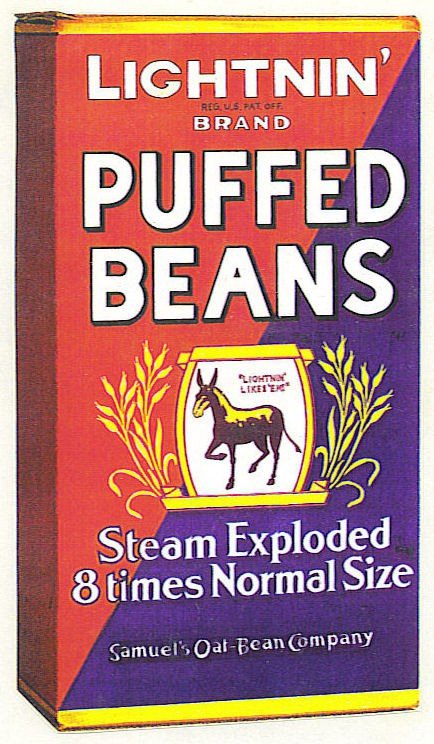 with a girlfriend at his side drove up to the station, just to show me a gunny-sack with a live rattlesnake in it!
with a girlfriend at his side drove up to the station, just to show me a gunny-sack with a live rattlesnake in it!
Puffed Beans were on Sam’s breakfast menu. Lightnin’ the Talking Mule liked ’em. Lightnin’ sometimes answered the phone down at the Creaky Timbers Mine, but Sam was not talking to any blame mules. In these show drop-ins Sam calls out from the station. Can you hear the timbers creaking?
AUDIO CLIP – Sam Calls the Creaky Timbers Mine, 2 cuts (Run time 1:04)
There was no lack of local color. Southern Utah is a land full of strange tales, of teenage sasquatch and Indian newputs and rock spirits that hurl great boulders down on you from the sky. There was the ghost woman of highway 18 and the old Mormon tale of the devil and his band of demons riding into Pine Valley on wild horses one dusty afternoon, looking for souls to steal. And in the seventies there were the U.S. Government secret breeding experiments up on Hurricane Mesa… That’s why Sam’s chickens were getting so big. Last time I checked he had a six-foot tall rooster. The gilas were getting bigger, too.
AUDIO CLIP – Giant Gila Stampede (Run time :40)
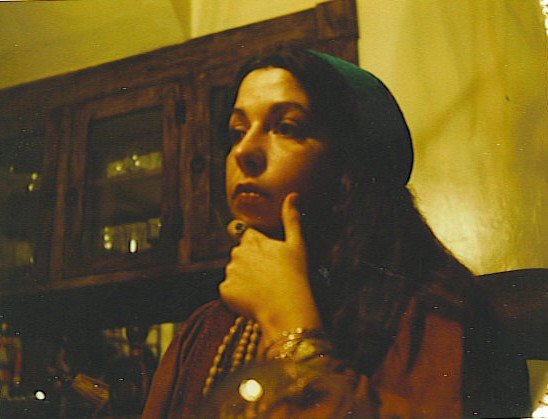
Kathy Kelly — X.V. Kelly’s wife — was the “Gypsy Lady” (photo above). She read palms and palm trees, even had one growing through the roof of her house. Ask her a question and she would reply, “First, cross my palm with seel…ver.” Gypsy was a regular on the “Unidentified” show which had a cast of 21 characters, more or less. An audience favorite was Wild Eyed Jake, King of the Chuckawallas. He didn’t talk. He just laughed in rhythm—with basso profundo obsession. Jake was only funnin’ but he might rip your arms off!
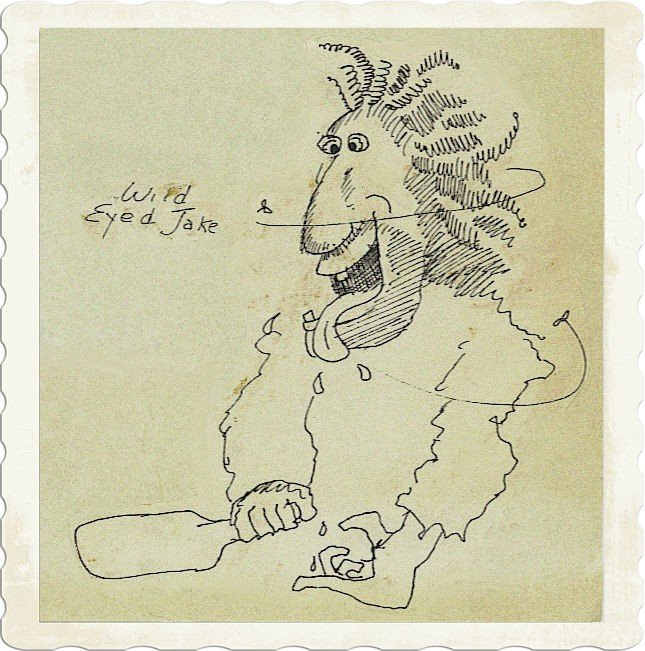
There were the larger story bits (60 to 120 seconds each) and listeners would get one or two a night. Mostly, what plot there was came to you in little pieces—drop-ins, and not exactly “correct” if you catch my meaning. There were little, green blighter fly-bys. And we can’t forget Chicken Teriyaki, the world’s oldest living Kamikazee pilot who liked to dive-bomb the radio station but always pulled that flying Zero out of its downward spiral at the critical moment. Bonzaaaiiiii !!!
And if you called a certain number in Hollywood the same voice answered, no matter if it was Big Al’s 24 Hour Shinola Parlor, Midnight Auto Specialties, Acme Mail Order Secretary, Fairy Man Specialty Bakery or the Indo-China Bar and Grill (The “voice” at the other end of the line belonged to show “gofer” Ric Wayman).
AUDIO CLIP – That Mysterious Phone Number in Hollywood, 4 cuts (Run time 3:01)
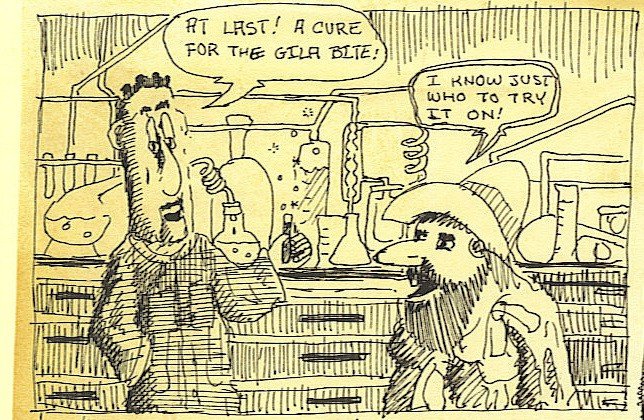
T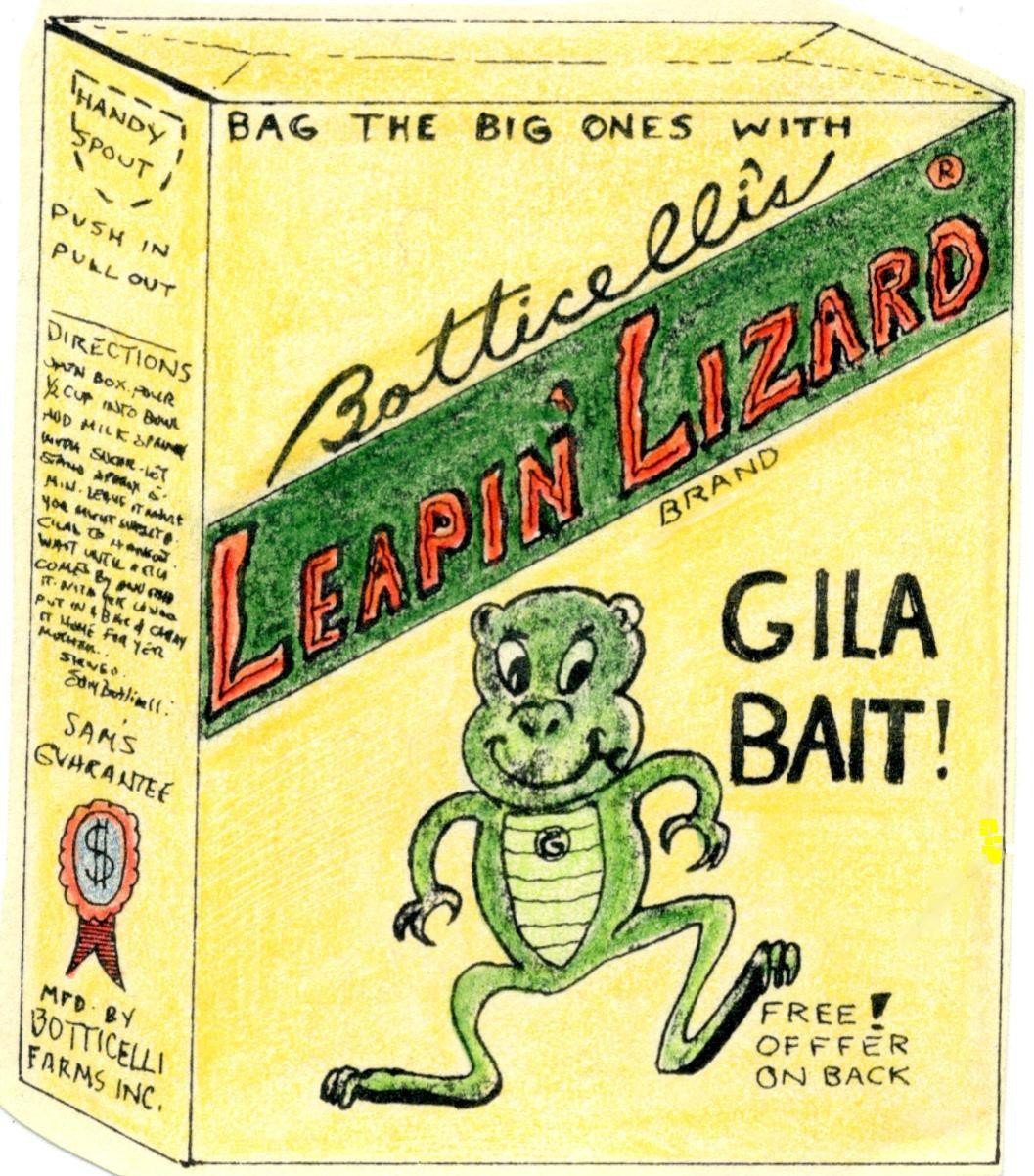 he “Unidentified Flying Air Show” was a warped cartoon world where you could get blown away. I mean knocked off. It was a bit like Yosemite Sam meets the Good, the Bad and the Ugly. When the music ended at midnight, very real games and bonfires started up in the “Sagebrush Triangle”—all of it spontaneous. I was occasionally on site as a sort of proxy Cecil B. Demille or John Ford—the unseen hand. Sometimes the activities lasted all night as hard-core show groupies moved strange but very tangible things around in the dark. For example, they might use bailing wire to tie a sun-bleached cow skeleton to a fence post. The object of the game was not to be seen doing it. The problem was that you never knew who might crash the party. You’re out in the desert, remember? It’s pitch black, not a light anywhere and there’s nothing but this dirt road descending into a place called “Wolf Hole.” The role playing could take on aspects of real life in earnest and a person might get hurt! This is how, years before the Burning Man Festival, there was the cult of the Unidentified Flying Air Show. It was an “experiment” that could only be carried out (to such a degree) in a small market. But the lessons I learned from it—about mass psychology and audience response—could be applied to a market of any size.
he “Unidentified Flying Air Show” was a warped cartoon world where you could get blown away. I mean knocked off. It was a bit like Yosemite Sam meets the Good, the Bad and the Ugly. When the music ended at midnight, very real games and bonfires started up in the “Sagebrush Triangle”—all of it spontaneous. I was occasionally on site as a sort of proxy Cecil B. Demille or John Ford—the unseen hand. Sometimes the activities lasted all night as hard-core show groupies moved strange but very tangible things around in the dark. For example, they might use bailing wire to tie a sun-bleached cow skeleton to a fence post. The object of the game was not to be seen doing it. The problem was that you never knew who might crash the party. You’re out in the desert, remember? It’s pitch black, not a light anywhere and there’s nothing but this dirt road descending into a place called “Wolf Hole.” The role playing could take on aspects of real life in earnest and a person might get hurt! This is how, years before the Burning Man Festival, there was the cult of the Unidentified Flying Air Show. It was an “experiment” that could only be carried out (to such a degree) in a small market. But the lessons I learned from it—about mass psychology and audience response—could be applied to a market of any size.
A significant number of Unidentified Flying Air Shows have since turned to dust. The graphite fell off the mylar into the bottoms of the tape boxes and they were discarded long ago. Large portions of the show still remain on some three dozen eight-inch reels. But in what condition? That’s the question. Even I haven’t heard this stuff in more than 40 years. In the following compilation (from March, 1978) Sam Botticelli plugs allergy tablets for Skaggs Drug Stores while the “Bossman” murders the song intros.
AUDIO CLIP – The Unidentified Flying Air Show (Run time 2:59)
Did you notice how I didn’t mention the station call letters once in how many breaks? It’s one of the joys of not having any competition in your market!
The C0llege Town Rocker

In the Fall of ’78, I went to work for Randy Morrison, star programmer from (KBPI) Denver. The AOR format we assembled for KJKJ-FM in Logan, Utah featured tracks like Fat Bottomed Girls by Queen; Firefall’s Strange Way; the Stones’ Miss You and FM by Steely Dan. Deejays used the music-file-card method. It was a college-town rocker and we were allowed a lot of creativity in the production room. We even had a full-time commercial copywriter. I seem to recall his last name was Bundy but, thankfully, no relation to serial killer Ted Bundy who was very much in the news at the time. Together, Mr. Bundy and I came up with a number of rather out-of-the-ordinary ads. Here is one for “State Wallpaper,” written by the KJ copywriter. It’s from October, 1978 and the voices were mine.
AUDIO CLIP – State Wallpaper Ad – KJKJ (Run time 1:06)
Next, in this ad called “Sunflower II,” the youthful sounding guy answering the phone was Bill (our engineer); the girl on the phone was Darla (KJ receptionist); I wrote these two and did the rest.
AUDIO CLIP – Sunflower II – KJKJ, December, 1978, 2 cuts (Run time 1:23)
When I was hired, one of the investors promised me 25K a year for being on the team that got the new KJ on track. So, who had a contract? The agreement was verbal. You know…promises, promises. I was there about 7 months but the increase in pay never materialized and I was getting restless. In February (’79) I walked out of the KJ studios— no hard feelings. I just walked…walked into a station on the other side of the mountain in Ogden (Utah). It might have been KSVN but don’t quote me on that. The PD hired me then and there. The best thing about the place was the vintage, General Electric console: stainless steel with red-laquer trim on the top and sides, and around the fader pots—gorgeous! The station had an MOR, adult music format–automated live-assist. I hated it. But I did one shift under the alias “Ben Lomond”—my idea of a joke and the name of the mountain that cast it’s shadow over the city of Ogden. After six hours of live-assist agony I was handed a quarter-inch stack of paperwork—production to do. They were using a Behringer mixer for a production board. Are you kidding me? This gig was going nowhere. I didn’t bother to show up the next day. I drove to Evanston, Wyoming—instead—and was hired on the spot as a “worm” on a three-stand oil rig. The money was infinitely better. I never went back to Ogden to collect my pay.
The Melon Patch Debacle
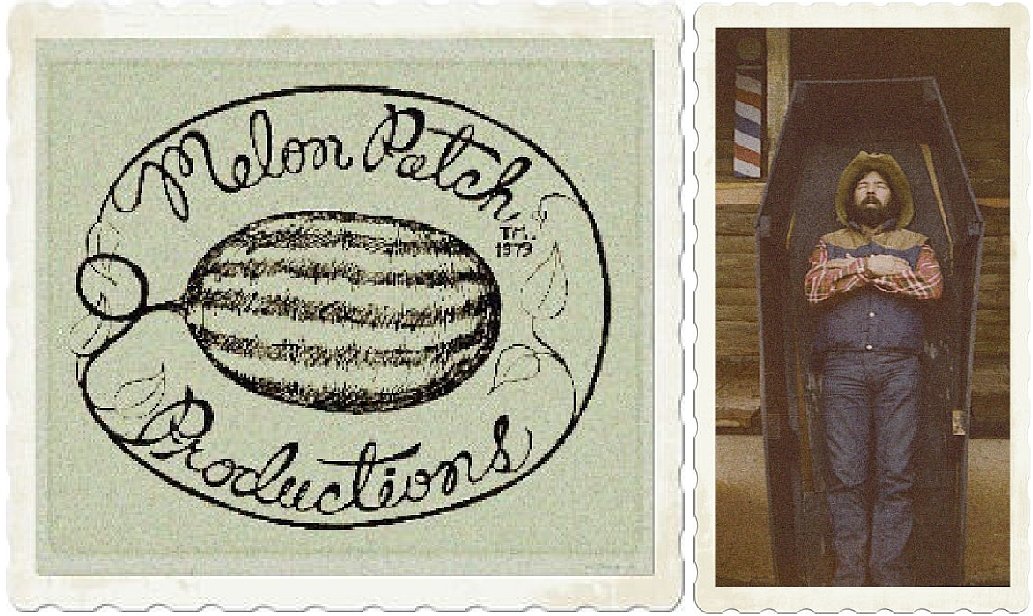
Southern Utah again… By mid 1979, I owned 50% of a tiny advertising agency and a shoestring budget with knots in it. My partner was Bill “Bodie” Haungs, electronics wizard and Hollywood stuntman (his main claim to fame was Sam Peckinpah’s Pat Garrett and Billy the Kid). He also took care of TV’s famous Mr. Ed (the talking horse). Bill told me, “I got his teeth floated once a year.” I still smile when I think about it. Together, we assembled “The Melon Patch,” a recording studio equipped with a big half-track machine as well as two and four-track recorders. We were producing creative radio spots for a short list of clients. We even did a film soundtrack with some Volkswagen footage and also a location recording for Handel’s Messiah at Southern Utah State College. But there was never enough work. We had a connection with Gil Jones at Pasadena Sound Recorders, but even that was not to be my stepping stone to Southern California. I was broke. I gave my share of Melon Patch to my partner Bill and went to work on John Beal’s bull ranch.
Mid-August, 1980—I walked into a station in Grand Junction, Colorado. It was another case of “I don’t remember the call letters,” but it was classic and my kind of place— established in the 40’s. The manager ripped some teletype copy off the machine and said, “Step into that announce booth and read it back to me.” I did. A minute later he stopped me in mid-sentence: “Okay, you’ve got the job.” My car was in Utah (Short story: it needed a new starter.) I also owned a 1940 La Salle. When I hitch-hiked out of the Western Slope country, I fully intended to get back to Grand Junction but never made it. I Got a quick cash sale for the La Salle and wound up in Hollywood instead.
Hollywood and the Lure of XETRA
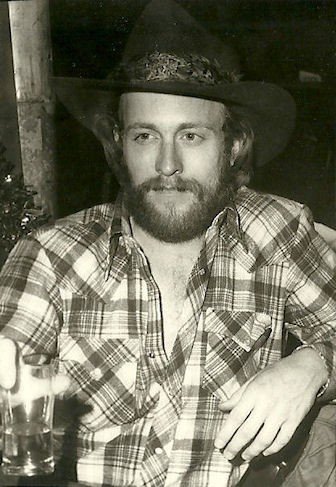
The hungry years of driving cab in Denver were behind me, and so were the oil rigs of Wyoming. Thanks to John Travolta, it was the height of the Urban Cowboy craze and the women in Hollywood wanted to do the Cotton-Eye Joe. By sheer coincidence, I had drifted into Tinseltown from the ranch in Utah. I was the only man on the Boulevard with dust on the Stetson and popular wherever I went, no matter if it was the 7-Seas, Formosa Cafe or Whisky a Go Go. And I still don’t know if the girls loved me or my hat.
So, how did the move to Hollywood happen? That story begins at the Salina, Utah truck stop. I was trying to hitch a ride when an eighteen-wheeler pulled into the yard. Painted in big letters across the side of the trailer was the name, “Staging Techniques” and below that: “New York – Hollywood.” Pretty impressive. Before he went into the cafe the trucker promised, “If you’re still here when I get back I’ll give you a ride.” Well, the driver was none other than Cliff Heilman, president of the company. And I got to ride in that big Kenworth. “I like to keep my hand in,” he said “and get out on the road.” He inquired about my background. So, I told him a little about myself. Mr. Heilman commented, “If you ever get out to Los Angeles, I’ll give you a job.”
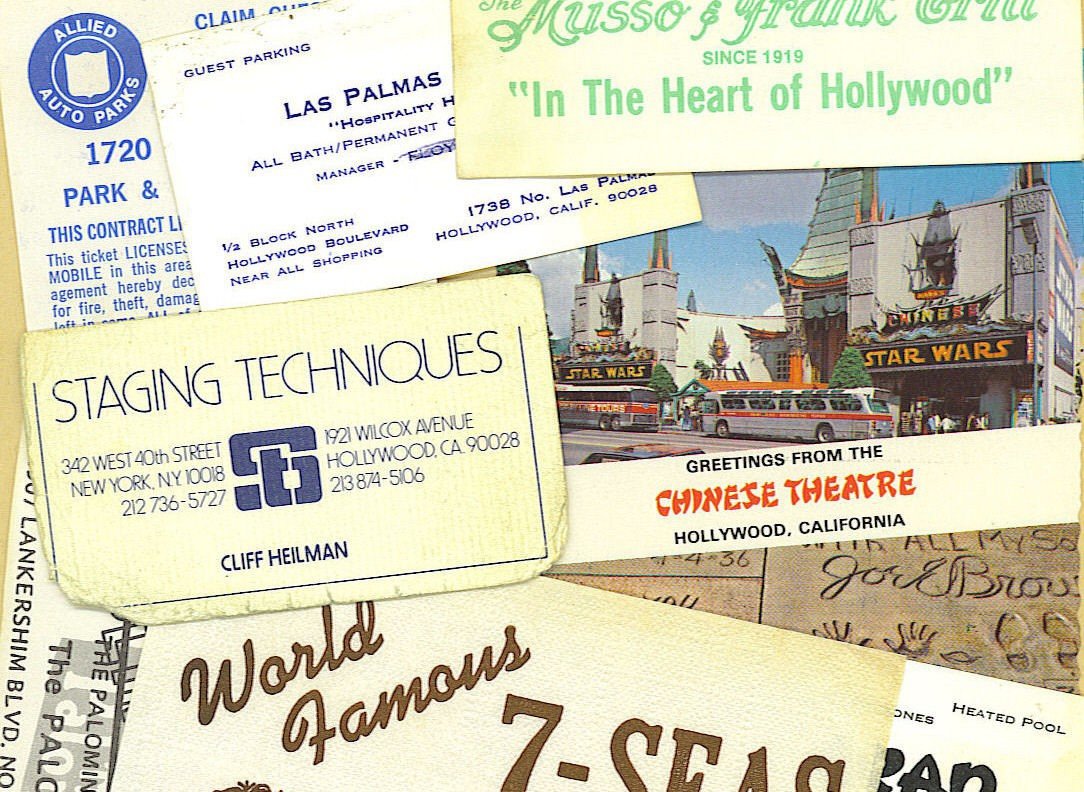
That’s why I decided to go west to LA. Upon arrival, Cliff Heilman kindly showed me the Staging Techniques facility on Wilcox Avenue. It had been one of Charlie Chaplin’s studios in the early days, one of a half-dozen locations in Hollywood that lay claim to that distinction. Staging Techniques was in the process of building the set for the Beach Boys Twenty-Fifth anniversary tour and they had a full crew. Mr. Heilman was rather apologetic about that: “If only you had seen me yesterday.” As secret agent Maxwell Smart would say, “Missed it by that much.” No matter, Cliff and I went to a cocktail bar and ordered a couple martinis. Somehow, I knew my timing was going to get better.
During the next four months I knocked around Hollywood, collecting more material for the memoirs. I lived on Las Palmas, a half block from the Boulevard. At the corner was Myrna Loy’s star on the “Walk of Fame” and Greta Garbo’s too. My watering hole was the Musso & Frank Grill, where Raymond Chandler wrote the Big Sleep. When I cruised the streets of LA, I punched in “Sixty-Four KFI” on my car radio. But next door to KFI on the AM band was this BIG signal out of Mexico. It was called the “Mighty 690” and it was pumping out the hits!
The idea of the border blaster appealed to me, so I went down to the Wilshire Resume Service and had them put together the latest dope on me. With resumes in hand, I drove to San Diego. At the time, XTRA had a luxurious suite with production studios on the fourth floor of the Harcourt Brace Jovanovich Building. All I did was drop off my work history with the receptionist. For good measure, I left the same at KCBQ and KGB as well. Mission accomplished, I returned to my domicile. Twenty minutes later I got a phone call from Ted Ziegenbusch at XTRA. We arranged a meeting for the next morning. Copy writer Tim Hackett sat in on the session. They listened to my audition tape. We talked ten minutes. And I went to work at XTRA the next day as their new Production Director. For the record, it was the first week of January, 1981. Curiously enough, I never did a lick of work at that time for Ted Ziegenbusch. The man I answered to was consultant Frank Felix. He was the guy who not only invented the Mighty 690 but may have dreamed up the idea for the “surf and sand” logo as well.

Meet Frank Felix the Mad Genius

The late Kris Anderson once recalled the mad man: “Actually Frank Felix didn’t look like John Belushi…John Belushi looked like Frank Felix. Everyone who met Frank thought they were looking at John Belushi’s lost brother. Whenever I think of Frank, I still see him in a dirty, black T-shirt and blue jeans and his gut hanging out of his shirt and over his belt, leaning so far back in his desk chair that you would think he was dead. He’d be wearing a pair of headphones cocked at a 90 degree angle to his ears—blasting the music squarely into his face and the back of his head. A free wheeling aura you say? Yes, you could call him that.”
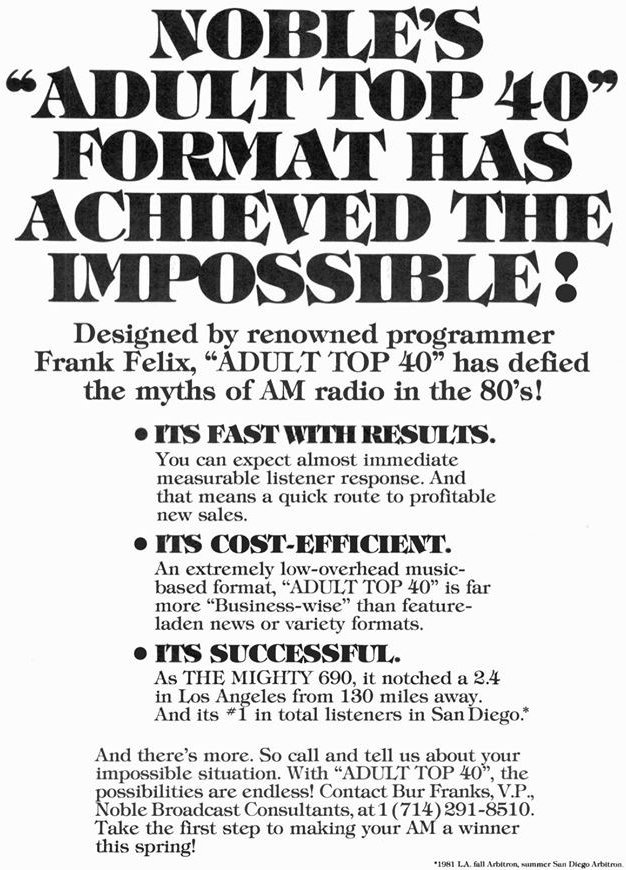
The Mighty 690 “Formula”
The Mighty 690 was basic Radio 101. Rule number (1) keep it “clutter free” and simple. That meant no traffic, no news and no wasted-time kibbitzing. We had one product: HIT MUSIC! (Songs in “A” rotation played every 90 minutes!)
(2) Play the song first—before the competition does! We sped 45 records up to 47 ½ rpm and recorded them on Audiopak tape carts. In this way we could play an extra song an hour! Kids heard it FIRST with us. If they tuned to the competition, the song would sound “too slow”—like it was dragging—and they would come right back to us. One caveat: when speeding up a record you couldn’t exceed 94 beats per minute or it became noticeable. And there were album cuts you couldn’t alter. Blondie’s “Rapture” is a prime example. Frank Felix had me record the eight minute version and then cut a minute-thirty out of the long instrumental riff in the middle. That is exactly how the Mighty 690 got it’s exclusive six and a half minute version.
(3) Frank wanted the jocks to always say “Mighty 690” first, before going into or out of music. And (4) never say “Mighty 690” just before airing a commercial. (5) The Mexican legal ID was almost subliminal, buried under the music of the jingle “ramp.” But it didn’t matter, because every one knew we were in Mexico. It probably added to the appeal. (6) Felix had the optimod audio processing cranked to the max. We were LOUD and the transmitter “breathed” with a sound you could sink your teeth into. It had tangible mystique and was bigger than life.
The Nitty Gritty on The Mighty 690 Deejays

THE “LIST”
As any radio geek knows, disc jockey lineups are constantly changing and they are not unlike the shifting fortunes in the game of musical chairs! Keep in mind that none of this is cast in concrete and I am trying to reconstruct a bit of history, a team roster from three and a half decades ago! So here (in alphabetical order) are the cats who appeared—at one time or another—on the Mighty 690: Roger Agnew; Kris Anderson; Michael Boss; Steve Clark; Scott Freeman; Jeff Golden; Jerry Hardin; Jeff Hunter; Todd Kelly; Jim Law; Jim Richards; Steve Sande; Richard Sands; Greg Shannon ; Dave Skyler; Rob Tonkin; and Ted Ziegenbusch—Did I miss anyone?
WHAT DAYPART?
September ’80 to April ’81—The original Mighty 690 deejay lineup included: Jerry Hardin (5-10a); Todd Kelly (10-3); Kris Anderson (3-7p); Jeff Golden (nights); and Roger Agnew, as “Roger Anthony” on the all-night shift. Jeff Hunter and Jim Richards would join the ranks of Mighty 690 jocks in short order. Jerry Hardin would leave for a management position in Albuquerque and Program Director Ted Ziegenbusch filled-in during this period. Greg Shannon (aka Sonny West) has been mentioned as a 690 deejay in David Leonard’s book, Aircheck: The Story of Top 40 Radio in San Diego. There is some disagreement as to whether the first air date for the Mighty 690 was Tuesday, September 16 or Friday, September 19. What we do know, however, is that Kris Anderson was first to go on the air. The time was 3 p.m. California time when XETRA changed formats—from beautiful music to Top 40/CHR and a legend was born.
April, 1981— This is when I went on-air full time and the Mighty 690 deejay lineup looked like this: Jeff Hunter (mornings); Michael Boss (mid-days); Jim Richards (afternoons); Kris Anderson (nights) By late ’81, Jeff Hunter was acting PD and Jim Richards was Music Director. Jim would later assume the position of Program Director. The subsequent Music Director would be Anne Haney.
Early 1982—The Mighty 690 deejay lineup had changed somewhat: Jeff Hunter 6-10a; Michael Boss 10-3; Jim Richards 3-8p; Richard Sands 8-midnight; All-nighter was Steve Clark. There were also Mexican board ops for overnights. One of them was a gentleman who always wore suits and ties. Unfortunately, I don’t recall his name but he took great pride in his work and made the mixes and “drops” sound like a million.
April ’82 to October ’84—Here, things get a bit tricky. The Mighty 690 deejay lineup included Jeff Hunter (mornings); Jim Richards (mid-days); Michael Boss (afternoon drive —where I would stay for the next 4½ years); Richard Sands (nights) By ’83, Jim Richards was doing mornings; Steve Sande was mid-days and Jim Law would take over the 7-midnight shift. A part-timer I remember was Rob Tonkin. It is worth mentioning that Steve Sande would also record our “overnight” voice tracks. And the “radioactive” Kris Anderson (the original Mighty 690 jock) was back in ’84 (replacing Jim Law).
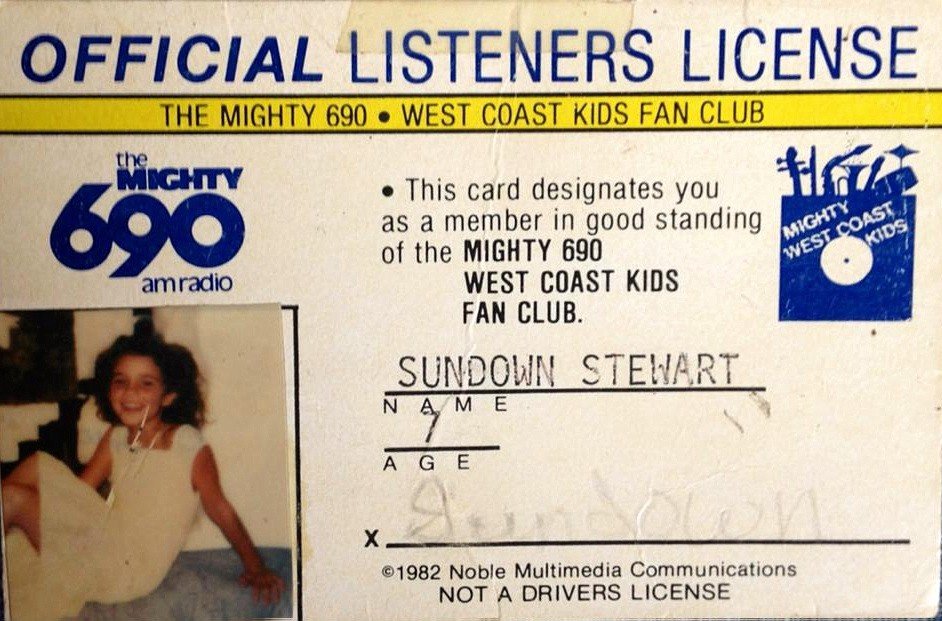
It’s been said that Kris Anderson was there from the beginning of the Mighty 690 era right to the end in ’84. It is true that he was the very first Mighty 690 deejay and he was also there when the transition was made to oldies on “69 XTRA Gold.” However, between ’80-84 Kris drifted back and forth between XETRA and stations in Albuquerque. Jim Richards and I were the only ones there for the duration—from January and April 1981 (respectively) to the end. The format change (to oldies on “XTRA Gold”) came in October ’84. At that time Jim Richards would move on. Jim LaMarca was hired (November ’84) as XTRA Gold PD. Kris Anderson, Steve Sande and I would be the only 690 jocks still around to play Chuck Berry, The Ronettes, Beatles and Animals. We may as well be in quicksand since there is no way this roster can be 100% correct in every detail. I have done my best and hope that all 690 aficionados are MIGHTY confused but happy. Why am I thinking of Abbott & Costello’s “Who’s on First?”

Beating The Automaton – Giving It Personality
The Mighty 690 jocks were sometimes referred to as “borgs” and “bots.” And there was some justification in that because of the repetitiveness of the format. But it is not true that we were restricted to reading liner cards verbatim. Early-on, my delivery was stilted and uncomfortable. But as I got used to the Frank Felix “straight-jacket” I began to refer to my audience as “fellow freakazoids” (a nod to the song by Midnight Star) and my on-air persona began to emerge. It had nothing to do with announcing and everything to do with a performance. The “personality” was projected through a laugh, an inflection, an aside or one-liner (always on topic). I sought originality, wasted no words and made sure the voice fit the mood. When I talked up the “ramp” on a ballad I imagined a solitary listener and made love to her mind. I took chances within small crevices of time—the short breaks I was permitted around the music. And I reminded myself: It’s not always what you say that’s important but how you say it.
Editor’s Note: Mike Boss says the Mighty 690 jocks stood at their BMX board when they worked. There was a tall barstool to lean against, but there was “dancin’ to the music” when they did their breaks. Here is a Mighty 690 aircheck/video compilation featuring Michael Boss. It begins with Tina Turner and a one-liner from Mike, then alternates between what he calls “standard breaks” and those exhibiting some persona. It ends with Boss capitalizing on his “Rappin’ Rodney” blooper. It’s all about rhythm.
Bossman & Rappin’ Rodney Blooper in aircheck/video, 1984 (Run time 4:06)
The Mighty 690 Legacy
A few detractors claim that the Mighty 690 was short lived. True, it didn’t have the longevity of the former KHJ “dynasty,” but 48 months (or 16 Arbitrons) is not exactly “short” in LA radio terms. It is about the length of the KHJ hey-day (’65-’69) by the end, of which, Robert W. Morgan, the Real Don Steele and Ron Jacobs were long gone. FM competition was not as serious then as it was a decade later. And it is worth noting: that, even with declining audience numbers at the end, the Mighty 690 was still on its feet and never given a knock-out punch by any CHR competitor. It was XTRA’s management that pulled the plug. They had decided to go for a more adult demographic in Los Angeles.

The Mighty 690 was the last, big Top-40 “blast” on AM in California’s Southland. The Mexican engineers called it “El Poderoso Seis Noventa” (The Powerful 690). It was a monster! Think of it as a great big jukebox that played Michael Jackson’s “Thriller” every 90 minutes. The West Coast “super-station” made the hits and got gold records for it and hung them on the office walls. That’s only half the story. South of the border, Tijuana was listening! The Mighty 690 was all you heard—the pride of TJ—blaring from radios everywhere, especially when you drove down Avenida Revolucion. In the nightclubs all the rich girls dressed like Madonna. The top-of-the-hour, high-energy jingles were, alternately, “The Mighty 690, Los Angeles!” and “The Mighty 690, Southern California!”
But, there was also Yolanda Salas’ iconic Mexican ID in Spanish, heard at 4 minutes to the hour. To rework a line from Shakespeare, (or is it the Maltese Falcon?) it was the stuff that young dreams are made of …
Three and a half decades later I am continually amazed at how many people remember when. I know I can speak for Kris Anderson, and all the other 690 deejays, when I say “Thank you for listening!”
The Mighty 690 Tribute “Station”
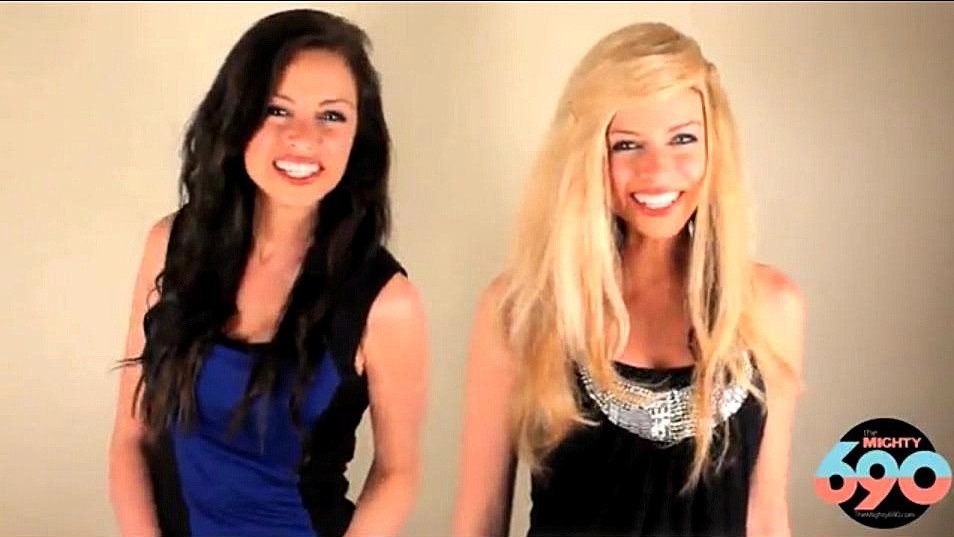
The Mighty690.com was established in 2010 by former Mighty 690 intern Chris Torrick. To see the Mighty690.com promo CLICK HERE. The website is currently on Facebook. To visit CLICK HERE
_______________________
To read Part 1 of Michael’s story, his colorful career as a jock at The Mighty 690 — that famous border blaster in Mexico — CLICK HERE. To check out Part 3 of the Bossman’s adventures — the transformation of Mighty 690 into XTRA Gold (including the tale of the one million dollar contest winner who never was) — CLICK HERE.
_______________________
Credits: Analog-to-Digital transfer of audio clips courtesy of Billy Donati – KRTN Raton, NM. Photo credit to Judy Sirois (Boss) Reeves for her picture that appears here of Michael Boss looking very much like a leprechaun.

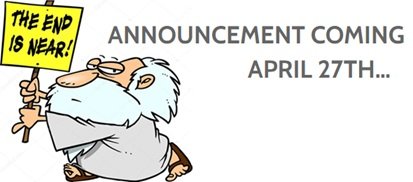
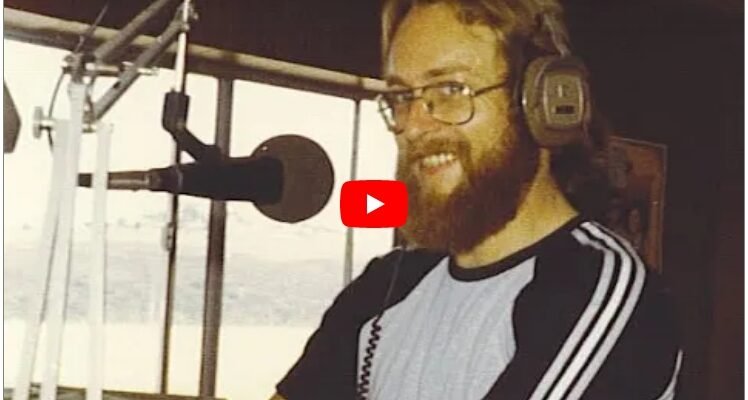

Just found this amazing article. Oh my, what a great history for the very talented Michael Boss – along with Jim Richards, perhaps my two best hires ever! Not everything stated in the M690 history here is 100 percent accurate, but that’s okay with me. I was actually hired as the program director in December 1980 by John Lynch and departed on October 31, 1981 when I left for another programming position and middays at 13KGB. I did all of the hiring and firing while at at 690, I programmed the station format, held staff meetings, selected the music and ran the music logs on the computer. I was even the contest and promotions director until the day I left for 13KGB. A lot of jobs and a lot of work. My agreement with the gm John Lynch meant that I had final say and could always overrule our consultants suggestions. I was not always on the air at 690, but did mornings or middays most often. When not on 690, I did mornings on 91X our sister station FM rocker. I have no regrets for leaving 690 when I did. The change allowed me to open my own radio consultancy and soon move to Los Angeles for an on-air position with KOST. However, I am grateful for the years in San Diego and especially the talented people that I had the opportunity to work with at 91X and 690. Thanks so much for allowing me to reply.
Ted, it’s great to hear from you and thank you for your comments. I think some clarification is necessary on my part, however. Reconstructing the Mighty 690 DJ roster was based on memory (and guess work to some degree). But here is the part that’s 100% correct. As the acting Mighty 690 program director you hired me the first week of January, 1981. And that was the only business interaction we ever had.
I spent the next four months in XTRA’s production studio. When I say that I didn’t do a “lick of work” for you, I mean that I never received any instructions from you during that time. I may well have been working for you but if that is the case it was certainly not spelled out. The man I answered to was Frank Felix. He okayed the Mighty 690 promos I produced, critiqued my work and when I went on air he was the guy who coached me. Later, when Kris Anderson and I wrote clues for the $50,000 treasure hunts it was Frank who gave us the “Okay”. He was the man to fear, the guy you had to measure up for.
Early May, ’81 it was decided (somewhere up the food chain) that I was to go “live” on air, on the Mighty 690. I never really knew who made the decision to put me on air. Ted, If it was you I thank you, sincerely! It was Kris Anderson who broke the news to me–informed me that I was going to do mid-days. And it was Kris Anderson who bought me lunch the day I first went to Mexico. It was Kris who showed me the ropes. I have a vague notion that I saw you once at the Mexican site during that first week, but Jeff Hunter was already the Morning Man. I remember being surprised that I wasn’t going to work with you. Kris Anderson mentioned that you had moved over to the FM side of the house. And on those rare occasions when I did see you in the office you were always with the 91X guys: Steve West, Mad Max and maybe Billy Bones .
Just after I took on mid-days at the Mighty 690, our “mad consultant” Frank Felix invited all the jocks to his house for a patio party. I remember those being present were: Jeff Hunter, Jim Richards, Kris Anderson and myself. My recollection is that Jeff Hunter had just been made PD. You and Jeff (and Jim Richards) were great guys and, as far as programming was concerned, you all had the PD title at one time or another. You did an incredible amount of work and were sending our playlists off to Billboard and Radio and Records, but I always had the sense that Frank Felix was the Boss. And we were the lucky ones, lucky to be along for the ride! Who was going to countermand Frank Felix, the programming genius, the guy who invented the Mighty 690 in the first place? He created the phenomenon and was running the show. To this day, the prevailing image I have of Frank Felix is of him in his office with headphones stuck permanently to his forehead (surrounded by stacks of 45s and Lps) and listening for hooks in songs! He was, without doubt, the dominant programming personality at XTRA and was singling out most of the music tracks on our Top 40 list. He and Roger Agnew were the cats who had the contracts; and it was Frank’s “programming” that made for full page ads in the trade magazines. I even got a big chunk of my own programming philosophy from Frank. In February 2013, I wrote to Kris Anderson: “So, with the able assistance of Mr. Agnew, Frank(en) Felix had created a Monster—the Mighty 690! Consequently, we sold thousands of Disneyland tickets and metric tons of Clearasil!”
After I went on air full time, you spent five more months with the Noble Organization but were apparently programming 91X FM. Having said that I want to thank you, Ted Ziegenbusch! Even though we never really worked together, you were the guy who hired me for the “job”. You opened the door for me at XTRA. It was you who got me my boarding ticket to the world of Mexican radio! Thanks!
In all fairness, Mike spent lots of time writing his own story. I suggested edits and some extra photos and scoped all the audio he sent to me. And I processed it…trying to eliminate noise and to eq it with better high end. And I set up the look of the page…but the Bossman wrote all the crazy words.
What a voice!! Why couldn’t we all have one of those and learn how to use it like that?? Oh well, I had one thing in common with Mike Boss – my first car was a $65 1938 LaSalle.
Thanks for the fascinating history, Steve!
Dick…just remember you have a deeper voice if you are not inhaling helium as you open the mic. I wish I had known that back when I was on the radio.
I’ve never had the helium happies, but I inhaled a gnat once. What were you doing, a remote in a gas balloon?
Actually…I do not think I ever did that either. But one of our jocks did at a remote where they were giving out balloons. It was pretty funny over the air.
We can thank God and the vocal coach, Dick. And thank you! To cop a line from “All in the Family” … the LaSalle ran great. You had to love the “cigar” lighter, camel-hair interior and the Cadillac wheel-base!
Dick, that LaSalle was ours. We found it at the Safeway parking lot in Seal Beach, CA. It was dirt cheap and actually running. We drove it all around for a while then decided to drive it to Cedar City from Long Beach. We made it as far as the Baker grade in the Mojave desert, CA. Had to stop at Hallaran Springs Road with overheating. That was as far as she was going. We had to tow it to LV from there. My folks were in Vegas and had to rescue us to tow the car to LV to see if we could figure out what was wrong. The shop mechanic at the only gas station in Hallaran was on a “cb break” in Indio. The one in LV said it was a firing order screw up and something else, forgot what, and we drove the car the rest of the way to Cedar. Mike bought it at that point. It was Navy blue and primer “Dalmatian” colour. I finally worked with Mike to paint the perpetual primered with a dark blue that matched almost perfectly. We actually started it back up and drove it around town.
John….you better not disclose all those problems with the car publicly…even 50 years later Bossman may demand a refund.
You know, Steven, that’s not a bad idea. Thanks!
You need a lawyer who will work for free up front and agree to being paid from the big settlement you probably have coming after litigation.
Thanks again to Steven & to Michael for a highly entertaining read. I’m always amazed at how well XTRA’s ‘stripped down’ Top-40 format sounded in spite of it’s refusal to conform to ‘personality radio’ Somehow Michael & the other highly talented jocks never let that hold them back. However, the best entertainment value had to be on the southwest Utah stations in St George & Cedar City. As I always discovered in my own radio career: there’s far more opportunity for creativity & experimentation or development of a particular on-air style that can only be developed & tolerated in small market radio, where I had some parallel experiences. Looking forward to Chapter 3 of this fascinating retrospective of Michael Boss’ career.
Mike….it is no wonder he was good on the radio. He tells a funny story.
Nine to midnight at KDXU, St George was the craziest thing I ever did and the most fun. You know, Mike, our generation was fortunate. Not only did we get to bask in the golden glow of Top-40 radio but we were able to participate in it–something younger generations in the biz have missed. In the sixties and seventies small market radio was a best kept secret. I think we’ve all met journeymen announcers who were on the “circuit.” And some of the best radio originated at family-owned stations. Now, KSUB, KBRE and KDXU are all owned by Cherry Creek Media (out of Denver). Pretty sure I wouldn’t be able to get away with my UFO show today.
Mike, glad to have borrowed you for our work on my crazy KGSU-FM finale. That was an all time classic. John invades Mike’s crazy adventure and the ray gunzzzz fight near Flying Saucer Rock! And wait till he (Lou P. Cheap) wakes up and tries to sell that old Indian some cheap trash!!! Remember when Al said “Oops, left this on…..Snap Bang!!!” Pulled a modulated carrier off the air. “Is it dead?” “I’m not stickin’ round to find out!” Run fer yer lives!!!!!
Dr. John.
I think I need a Google auto translation on this description. Very outer spacey.
Here’s the back story: After the Wyoming oil fields I returned home (Cedar City, Utah) and found John Curtis living in my bedroom! Okay…He was attending Southern Utah State College. He had plundered all my Unidentified Flying Airchecks from KDXU, the ones I stored in the closet (about fifty 8-inch reels). That’s where he found the tape box for a show titled: “Is He Mad?” Well, he was curious and played it…played ALL the shows on my Ampex. John later told me he had found an “empire” and couldn’t stop listening. He was hooked, said they were funny, seriously clever and he liked the little isms. Glad somebody thought so (thanks, John!). And he knew all my bits better than I did! I was thinking, “What have I created?” … Was he Young Frankenstein? Now I wonder, was it more like Me & Mini-Me ?!!! To the point: I Helped John put together a show for his radio class, even made an appearance with him as the “Bossman” on KGSU-FM, the college station. You might say it was a one-time revival of that Unidentified Flying Thing…ray guns and all. Translation: Stay away from Flying Saucer Rock.
I like the story about the trip with the Black Panther and the tie in to song lyrics. Most of us do not confess to being superstitious, but sometimes if a song comes on at certain times it is only natural to wonder if it is an omen. Say you got a docs appointment and on the way there the radio is playing Honey or another of the many songs about death and dying. Is this a message from the universe? The same could apply to songs about breakup and divorce. When people in the listening audience think the guy on the radio is sending them personal messages that tends to be categorized as mental illness….but are you crazy to notice and wonder about those message songs that seem to be talking to you at specific times of stress or upheaval?
Thank you very much is amazing article! Michael Boss was my favorite DJ on The Mighty 690. Great historical reference. Would love if you could pass on my contact information to Mr. Boss as I would love to personally thank him for the great memories.
Brian….I expect the Bossman will drop by soon to say Hi and answer any questions you or others might have for him.
Brian, thank you for your kind words. And thanks for listening! The Bossman.
This is Bill “Bodie” Haungs. Mike, you have my number, please give me a call sometime.
Great back story to Michael Boss. I actually worked with MB at KJKJ in Logan. I was a sales puke. I remember the full time copywriter. He sat is a small windowless room and wrote ads for all the local companies we sold an ad package to. The sales manager (name slips my mind, but he was Herb Tarlek before Herb) would use him and tapes of his ads as a tool to get ads sold to new clients. He was also a golfer and we would sneak out to Smithfield up north in Cache Valley to play 9 holes in the afternoon. It was a fun place to be when it was the college rocker. When the station went automated, the joy was gone. Randy Morrison was a very smart guy but he caved to the money.
Peter, I am sure that Mike will be responding to your comment. He likes communicating with guys he knew from the past…as do we all I think.
Peter, it’s great just knowing that there are people like you who remember KJKJ. Your reference to sales manager Herb Tarlek (at the fictitious WKRP Cincinnati) is hilarious. Herb certainly knew how to collect money from deadbeat clients. On occasion I believe he even resorted to blackmail. Not that anybody at KJ did that. Nine-hole golf? So that’s what you were up to in the afternoons while I was producing “spec ads” for you sales guys! Too funny. When I was there I always thought the vibe in KJ’s garden-level bunker was laid back and free-wheeling. It was a trip wasn’t it?
At KBFW we had a sales guy who one time collected money from this deadbeat we thought would die owing us money, or we would die with him owning money. The sales guy brings it all in. Then a couple days later the former debtor calls to say the sales guy showed up at his office with a baseball bat and made clear he would use it. Fortunately, I was not the GM or owner at the time, although nothing ever became of the matter legally…other than the station did get paid.
Just goes to show you. Truth IS stranger than fiction. What you describe could have been a WKRP episode.
Hi there! I am the Ric Wayman heard in the KDXU drop in you have posted. Holy cow, where in goodness’ name did you get that?
I currently still have my fingertips in radio, with shifts on both Boss Country Radio and Boss Boss Radio. I go by my long time air name Ric Stratton.
Thank you so much for the memory. I’m still in touch with the Bossman, in fact we spent over 90 minutes on the phone the other night catching up. Regards from Southern Utah and again, thank you so much!!
Ric Wayman
Ric…as to source…that goes directly to the BOSSMAN. He was hiding audio recordings from you…..I guess he can as the BOSS. From your comment it sounds like that whole BOSS karma has dominated your life evermore. PS…I will take credit for kicking the original muffled tracks in the butt and making it pretty listenable for archival audio.
Hey Jeff 50k….thanks for dropping by. I heard Mike on KOQT and he was really good for a young DJ at that station. Memories are Made of This.
Another great article !! Top notch and very informative! Boss tells a awesome story of his early adventures in Broadcasting Formatic History! A true dedicated radio professional ! A real radio rebel ! Jeff5ok